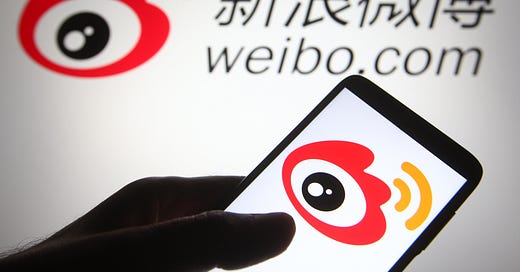Weibo: Unlocking China’s Digital Gateway for Global Businesses
In today’s digital-first world, brands looking to expand into China must navigate a social media landscape unlike any other. Among the country’s most influential platforms is Weibo, a powerful microblogging and social networking site often compared to Twitter and Facebook—but with unique features and engagement mechanisms tailored to the Chinese market. For global business executives, understanding Weibo is not just an option but a strategic necessity.
What Is Weibo?
Launched in 2009 by Sina Corporation, Weibo has grown into one of China’s largest social media platforms, with over 580 million monthly active users.
Unlike Western platforms, Weibo is an open network where content spreads virally, enabling brands to reach vast audiences beyond their direct followers. The platform supports a mix of short posts, long-form articles, videos, live streams, and interactive hashtags, making it a dynamic space for storytelling and engagement.
Why Weibo Matters for Businesses
For companies entering China, Weibo serves as both a brand awareness tool and an engagement hub. Here’s why it’s a game-changer:
Direct Access to Chinese Consumers
Weibo connects businesses with millions of users across different demographics, from young urban professionals to high-net-worth individuals. It’s a place where consumers discover trends, engage with brands, and share opinions—making it a crucial touchpoint for foreign brands.Real-Time Engagement & Viral Potential
Unlike WeChat, which operates in a more private network, Weibo is an open discussion forum. Content can go viral quickly through retweets, hashtags, and trending topics, offering brands an opportunity to amplify their message at scale.Integration with E-Commerce & Livestreaming
Weibo is not just a content platform—it’s deeply integrated with e-commerce giants like Alibaba (Taobao & Tmall). Businesses can drive traffic to their online stores, leverage KOLs (Key Opinion Leaders, or influencers), and even host livestream shopping events, a booming trend in China’s digital economy.Crisis Management & Brand Reputation
In China, consumers actively discuss brands online, and Weibo is often the first place where public relations crises emerge. Businesses can use the platform to monitor brand sentiment, respond to customer concerns, and manage their reputation in real time.Localized Advertising & Data Insights
Weibo’s advanced targeting and advertising tools allow businesses to launch highly localized campaigns. Brands can access detailed consumer insights, refine their messaging, and drive engagement through promoted posts and influencer partnerships.
How Global Brands Can Succeed on Weibo
To fully leverage Weibo’s potential, businesses should adopt a localized and strategic approach:
Create Engaging, Culturally Relevant Content: Chinese consumers expect high-quality, visually appealing, and interactive content. Adapt your messaging to local culture, festivals, and trends.
Leverage Influencers & KOLs: Partnering with the right KOLs can significantly enhance your brand credibility and reach.
Engage Actively & Build Community: Weibo is an interactive platform—brands that respond to comments, join trending discussions, and engage with their followers build stronger brand loyalty.
Utilize Weibo Advertising: Weibo’s targeted ads can help brands reach specific demographics and increase visibility in a highly competitive market.
Monitor & Adapt: Regularly track performance metrics and consumer sentiment to refine strategies and stay ahead of trends.
Final Thoughts
Weibo is more than just another social media platform—it’s a gateway into China’s digital ecosystem. For businesses looking to expand their footprint in the world’s second-largest economy, leveraging Weibo effectively can mean the difference between gaining traction and getting lost in the noise.
With the right strategy, brands can build awareness, engage directly with Chinese consumers, and drive business growth in this dynamic and fast-moving market.



